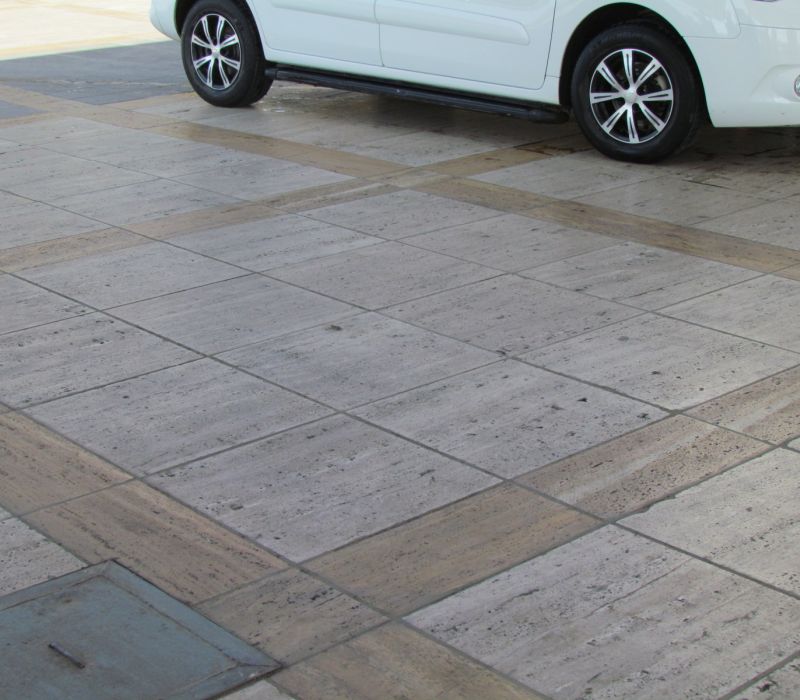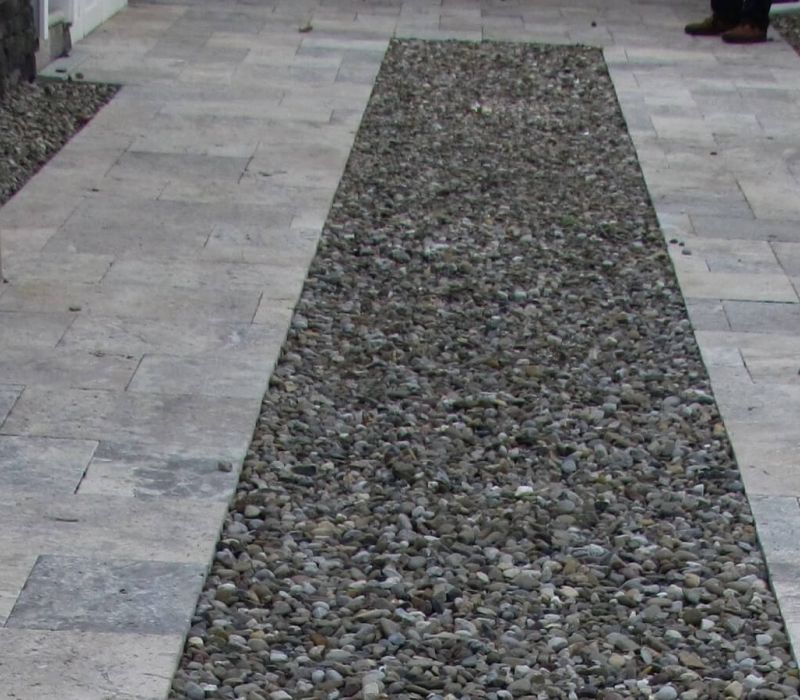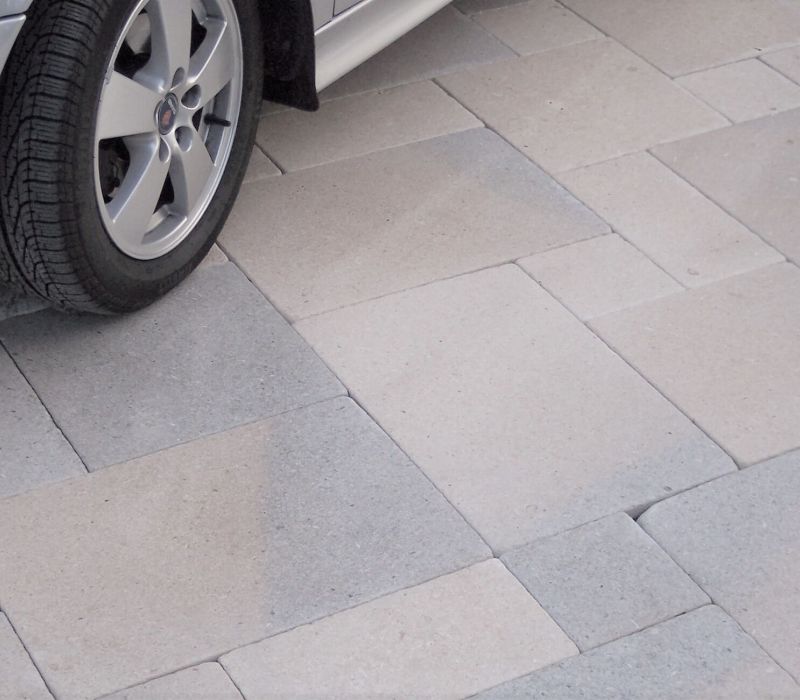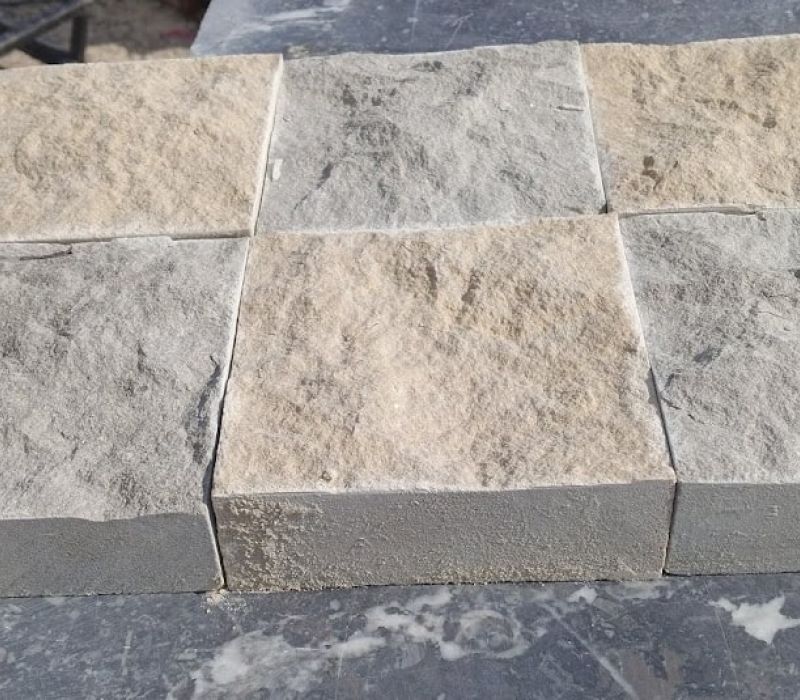Driveway Pavers
When planning a commercial project or home exterior living space, natural stone pavers add distinction and a sense of permanence. It is telling that the ancient Romans used limestone, travertine, and marble in their architectural wonders, many of which still exist today. While they couldn’t have performed the geological assessments and comparisons that we can today, they intuitively prized these natural materials for their strength, beauty, and longevity.
These days, a shift to large-format natural stone for both residential and commercial driveway systems is gaining popularity and replacing that concrete surface. Natural stone in all formats–large and traditional (small 4”x4”, 6”x6” cubes) — with its aesthetic and structural benefits makes it a strong alternative to concrete pavers or asphalt. With a PSI of 5000+, and the proper installation techniques, cobblestones, patterns, or large format pavers (squares or rectangles) can easily be produced for the project design. Various thicknesses, 4cm, 5cm, and 6cm, are typical with a variety of surface finishes such as sawn cut, bush hammer, honed, and tumbled. Architectural accents such as curbstones, drains, circle patterns, large slabs, and benches are available.






Best Driveway Pavers
Natural stone driveway pavers provide the necessary flexural strength and an artistic element so driveway systems can be a unique and functional feature, enhancing the overall property. Cobblestones and driveway pavers can be produced in various thicknesses and size formats to design a custom curb appeal. See our blog, DRIVEWAY STONE PAVERS MAKE AN IMPRESSION AND ADD VALUE.
For the safest approach, it’s best to select natural stone pavers of smaller sizes. When working with smaller pieces, such as 4”x4”, 4”x6”, or even 6”x6” cobblestones, use a ‘dry set’ application. But if your customer wants something different than the classic cobblestone 4”x4” granite, limestone, or porphyry block, the key is to consider the flexural stress on the stone. If the stone surface is longer than 6 inches in any one direction, then a strong (high ‘flexural strength’) material is optimal, particularly when considering a ‘dry set’ application. Avoid stones prone to having natural fissures or clefting. For further details, read our blog, DRIVEWAY INSTALLATION: BEST PRODUCTS (AND TECHNOLOGIES) FOR LIFETIME VALUE.